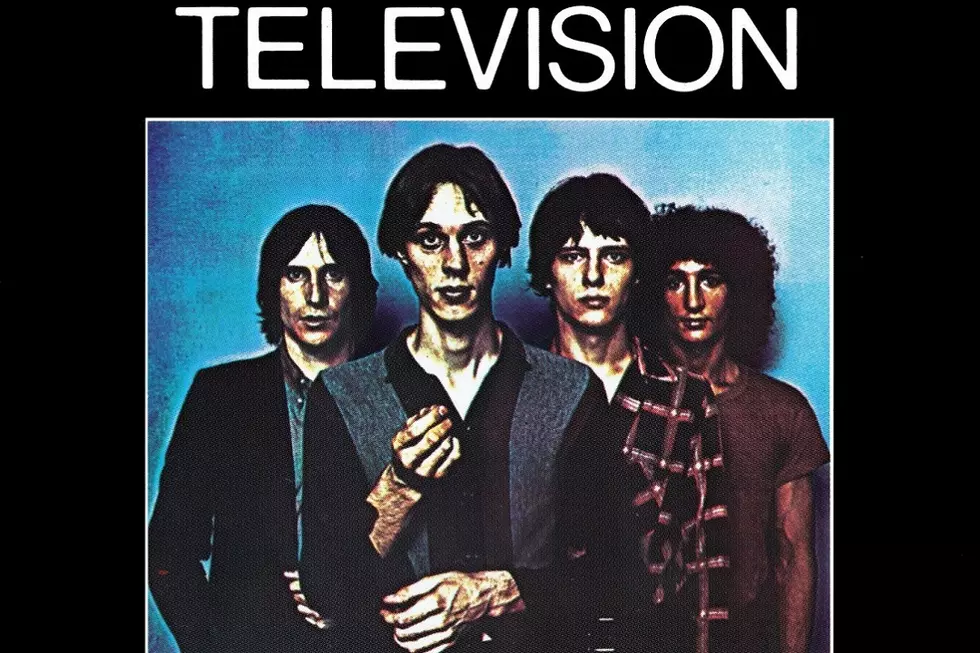
The Dictators’ ‘Manifest Destiny,’ a Hard Rocker in Punk Clothing
Punk, in its heyday of the mid-to-late 1970s, would like people to have believed what it said it was: a primal, back-to-the-basics approach; that it eschewed the ornate Frippery of progressive rock, the shallowness of disco and the blatant envy hard rock seemed to exhibit right there in the middle. Punk wasn't the Bee Gees or Georgio Moroder, and neither was it Pink Floyd or Emerson Lake & Palmer.
Punk was so caught up in what it wasn't that it either casually ignored, or hadn't a clue, what it was.
Into this ramshackle bunch was easily inserted a country western fan -- Declan "Elvis Costello" MacManus -- a piano man who was well-versed in jazz and classical -- Joe Jackson -- and a devotee of '50s and '60s pop as well as the production of Phil Spector -- Jeff "Joey Ramone" Hyman. The Jam's Paul Weller graduated to the smooth europop of the Style Council. The list goes on.
While not necessarily one of the first names that spring to mind when discussing punk, it would also be difficult to not include the Dictators. The room assignment is more apt when factoring in their debut, 1975's The Dictators Go Girl Crazy!. Released on Epic Records, Go Girl Crazy! had the smart aleck attitude and disrespect endemic of punk, here at its nascence. The cover of "California Sun" is faster, sloppier and undeniably goofier than the original, with its admission of "and I boo-ga-loo" grafted into the dances danced in said state's sun.
Maybe it was an homage, but it was an homage by way of a wedgie and a Hurtz Donut.
It also didn't set the world on fire, and two years later the Dictators had a new home, and in one of the most unlikely neighborhoods, too: David Geffen's Asylum Records, home of the Laurel Canyon ethos with performers like Eagles, Jackson Browne and Joni Mitchell. About the closest companion the very New York Dictators might have had was with the acerbic Warren Zevon; but even so, punk and Asylum seemed like the weirdest cocktail ever.
1977's Manifest Destiny suggests it wasn't as strange a combo after all. The first indicator that the Dictators weren't your typical punk unit was the appearance of the two people who produced them, from that first album up until 1978's Bloodbrothers: Murray Krugman and Sandy Pearlman. The duo was known previously as one of the forces that introduced Blue Oyster Cult into the world.
Taken side-by-side, Blue Oyster Cult and the Dictators actually share many traits, and that was seen clearly on Manifest Destiny. First there's the multiple vocalist approach. Cult's main vocalists Eric Bloom and Donald "Buck Dharma" Roeser traded off duties and were occasionally supplanted by the Bouchard Brothers, Albert and Joe. The Dictators had keyboard player Andy Shernoff and former roadie Handsome Dick Manitoba (who would leave a far more prominent mark on Bloodbrothers).
Forget about the cover of the Stooges "Search and Destroy" and focus on the rest of Manifest Destiny. On the opening "Exposed," a tune about a man who contracts an STD from his girlfriend, to the vengeful consternation of his wife, there are thick, stacked vocal harmonies more aligned to "(Don't Fear) the Reaper" than anything the Stooges ever did. The guitar solo in the similarly-themed "Disease" is hotter and flashier than what the Ramones were offering.
Great god in heaven ... are they ... a hard rock group?
There are other clues: "Sleepin' With the TV On" is a lost classic that could have been a power pop watershed moment with its romantic, nostalgic lyrics about late night television, passed eras and longing for love in black and white. The Thin Man is evoked and then reiterated in the chorus -- again with those super-thick, orchestrated backup vocal harmonies -- "Sleepin' with the TV on, dreamin' William Powell dies.'
"Hey Boys" comes out of nowhere to open side two of the record -- a power ballad if there ever was one. The record store clerk might have been technically correct in placing the record in the punk section with the Sex Pistols and the New York Dolls, but listeners surely had to deal with culture shock on first listen.
Pressing the equation farther, both bands seemed quite cognizant of pop culture and their tongue-in-cheek place within it. B.O.C. used spookiness as the filter from which absurdities like "Godzilla" and "Joan Crawford (Has Risen From the Grave)" strain through. The Dictators used scuzzy, street-level trappings. Both produced hook-laden rock and roll.
That may be the worst part about how the band got pigeonholed. An entire audience that would have appreciated the kind of rock the Dictators put out, particularly on Manifest Destiny, likely never bothered, believing the group was something else entirely. At the same time, it's probable that the band didn't become top-echelon punk stars for that same reason. When's the last time you saw a Dictators T-shirt in the mens' department of Target?
Post-Manifest Destiny, the band is a trivia nerd's dream. In short: there's Bruce Springsteen's uncredited cameo on Bloodbrothers' "Faster and Louder"; there's bassist Mark Mendoza's exit from the band to join Twisted Sister, and Ross "The Boss" Friedman's exit to join codpiece-loving metal band Manowar; there's a brief interlude where the band morphed into Manitoba's Wild Kingdom, again with Sandy Pearlman in the mix; Shernoff assisted with a track for Guided by Voices which surfaced on a reissue of the band's breakout LP, Bee Thousand.
For a band that has been most clearly identified as punk-era second stringers, they sure got around; much like the characters in some of their songs.
More From Diffuser.fm









